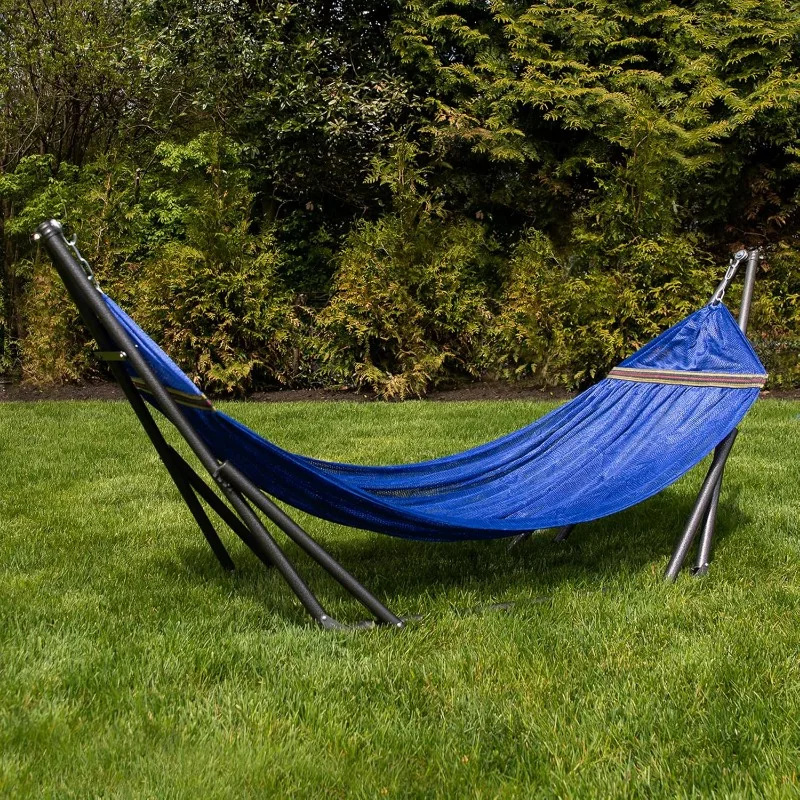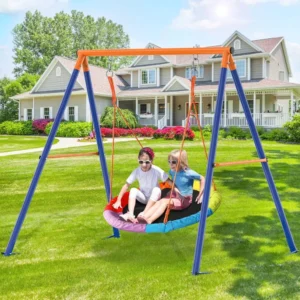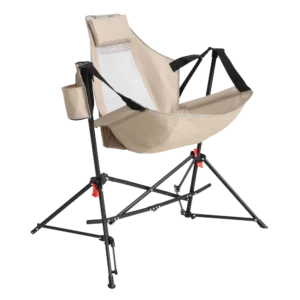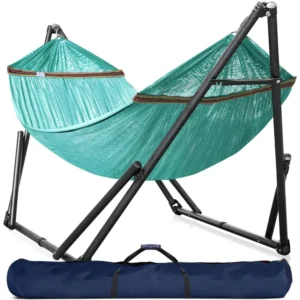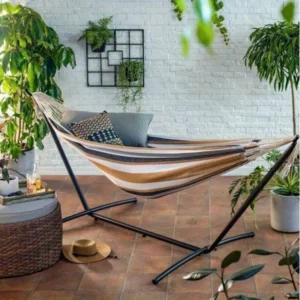Introduction: The Challenge of Hammock Storage
Hammocks bring a sense of peaceful relaxation to any space, but when not in use, they can quickly turn from blissful retreat to frustrating storage nightmare. The tangled ropes, bulky spreader bars, and space-consuming nature of hammocks present a unique organization challenge for even the most tidy homeowners.
Many hammock enthusiasts face a common dilemma: how to keep these comfort essentials readily available without sacrificing valuable living space. The struggle becomes even more real when considering how improper storage can lead to premature wear, mildew damage, or unsightly clutter in your home or outdoor areas.
In this comprehensive guide, we’ll explore creative and practical storage solutions that address both space-saving needs and proper hammock protection. Whether you’re dealing with limited apartment space or simply want to organize your outdoor living area, these ideas will help you maintain your relaxation oasis while mastering the art of ultralight hammock packing techniques and efficient storage.
Why Proper Hammock Storage Is Essential
Taking the time to store your hammock correctly isn’t just about keeping your space tidy—it offers numerous benefits that enhance both your living environment and the hammock itself:
Extended lifespan: Proper storage shields your hammock from damaging UV rays, moisture, and general wear that can break down fibers over time. Hammocks protected from the elements can last 2-3 times longer than those left exposed.
Maximized living space: A well-stored hammock eliminates unnecessary clutter in yards, balconies, and indoor rooms, freeing up valuable space for other activities.
Quick accessibility: Strategic storage solutions ensure your hammock is ready when you are, making the transition from storage to relaxation seamless.
Prevention of mold and mildew: Storing clean, dry hammocks properly prevents the growth of harmful mold that can damage fabrics and create health concerns.
Safety improvement: Eliminating tripping hazards from improperly stashed hammocks creates a safer environment, especially important for homes with children or elderly individuals.
Cost-effectiveness: The small effort of proper storage prevents damage that would require expensive replacement, making it an economical choice in the long run.
Learning various hammock compression techniques can significantly reduce the footprint of your hammock when not in use, making storage even more efficient and space-friendly.
Pre-Storage Hammock Preparation Essentials
Cleaning By Material Type
Before storing any hammock, proper cleaning is crucial for longevity:
Cotton/Fabric Hammocks
Gently hand wash with mild soap solution (1 tablespoon mild soap per gallon of lukewarm water). Avoid harsh detergents, bleach, or machine washing which can damage fibers and weaken the hammock structure.
Nylon/Polyester Hammocks
Wipe down with a damp cloth and mild soap, then rinse thoroughly. These synthetic materials dry quickly (typically 2-4 hours in direct sunlight) and resist mold better than natural fibers.
Rope Hammocks
Hose down to remove debris caught between rope fibers, using a soft brush for stubborn dirt. A mild bleach solution (1:10 ratio with water) can be used occasionally for white rope hammocks to prevent mildew.
Thorough Drying
Complete drying is non-negotiable before storage:
– Cotton hammocks require at least 24 hours of drying time in a well-ventilated area
– Hang synthetic hammocks in direct sunlight for fastest drying
– Flip and rotate hammocks periodically during drying to ensure no moisture remains trapped in folds
Proper Folding Techniques
Different hammock types require specific folding methods, and understanding how to pack hammock hiking equipment efficiently can be applied to home storage as well:
Fabric Hammocks Without Spreader Bars
1. Lay flat and fold in thirds lengthwise
2. Roll from one end toward the middle, then repeat from the other end
3. Bring the two rolls together for compact storage
Hammocks With Spreader Bars
1. Fold rope sections between bars in an accordion pattern
2. Secure with a loose strap to maintain organization without creating permanent creases
Camping Hammocks
1. Fold in half lengthwise
2. Roll tightly while squeezing out air
3. Utilize stuff sack with compression straps when available
Before folding, inspect for any damage that might worsen during storage, such as fraying ropes, loose stitching, or weak attachment points.
Vertical Storage Solutions: Maximizing Wall Space
When floor space is at a premium, looking up provides excellent hammock storage opportunities. Vertical solutions take advantage of often underutilized wall space while keeping hammocks accessible and organized.
Wall-Mounted Hook Systems
Various hook options offer different benefits for hammock storage:
- J-hooks: Simple, economical options that support 25-50 lbs (11-23 kg); ideal for lightweight hammocks
- Decorative hooks: Combine functionality with aesthetic appeal, available in various finishes to complement home decor
- Pegboard systems: Offer flexibility to adjust hook positions as needed and accommodate multiple hammocks or accessories
Installation tip: Mount hooks at approximately 5-6 ft (1.5-1.8 m) from the floor for easy access while maximizing vertical storage. Always use wall anchors appropriate for your wall type and the weight of your hammock.
No-Drill Options for Renters
When permanent installation isn’t possible:
– Over-the-door hooks with foam padding prevent door damage
– Tension rod systems between closet walls create temporary hanging space
– Command hooks rated for appropriate weight provide damage-free alternatives (though not suitable for heavier hammocks)
Ceiling Storage Systems
For maximum space efficiency, look overhead:
– Pulley systems allow hammocks to be hoisted out of the way when not in use
– Fixed ceiling hooks with hammock slings create decorative storage that doubles as a design element
– Retractable systems combine accessibility with discreet storage
Understanding the best places to hang hammock indoors provides insight into where these vertical storage solutions might work best in your own space.
Concealed Storage Strategies for Tidy Spaces
For those who prefer to keep hammocks completely out of sight when not in use, several concealed storage options offer clean, clutter-free solutions.
Under-Furniture Utilization
The space beneath beds and sofas provides surprisingly effective hammock storage:
– Shallow plastic containers (7-9 inches [18-23 cm] height) slide easily under most bed frames
– Custom-built rolling drawers maximize the full under-bed space
– Vacuum-sealed bags can reduce hammock volume by up to 70%, making them thin enough to slide under low furniture
Multi-Purpose Furniture Solutions
Furniture that works double-duty as storage:
– Outdoor storage benches protect hammocks from elements while providing seating
– Storage ottomans keep indoor hammocks within arm’s reach of their hanging location
– Hollow side tables offer discreet storage in plain sight
Closet Organization for Hammocks
Transform closet space into efficient hammock storage:
– Dedicated shelf space with specific folding methods maximizes vertical storage
– Hanging methods using closet rods with S-hooks keep hammocks off the floor
– Door-mounted organizers utilize otherwise unused space
Our portable hammocks stands are specifically designed with storage concerns in mind, folding down to compact sizes that fit easily in most of these concealed storage solutions.
Compact & Portable Storage for Travel Hammocks
Travel and camping hammocks present unique storage opportunities due to their lightweight materials and compact design.
Maximizing Original Storage Bags
Most portable hammocks come with their own storage solution:
– Use specific “ranger roll” folding techniques to minimize bulk before placing in the original bag
– Add silica gel packets to prevent moisture buildup during long-term storage
– Consider sewing additional compartments onto original bags for accessories like carabiners and straps
Compression System Benefits
Dedicated compression systems can reduce packed hammock size dramatically:
– Roll-top dry bags provide water protection while compressing air out
– Strap-based compression sacks can reduce packed volume by 40-50%
– Vacuum compression bags offer the most dramatic space saving (up to 70%) but should be used cautiously with natural fiber hammocks
Multi-Purpose Gear Bags
For the most efficient storage, especially for camping enthusiasts:
– Look for compartmentalized bags that separate hammock from accessories
– Weather-resistant materials protect hammocks during transport and storage
– Consider weight distribution for comfortable carrying (1-3 lbs [0.45-1.4 kg] for typical packed hammock systems)
Our ultimate guide to ultralight hammocks provides additional insights into packing and storing compact hammock systems for maximum efficiency.
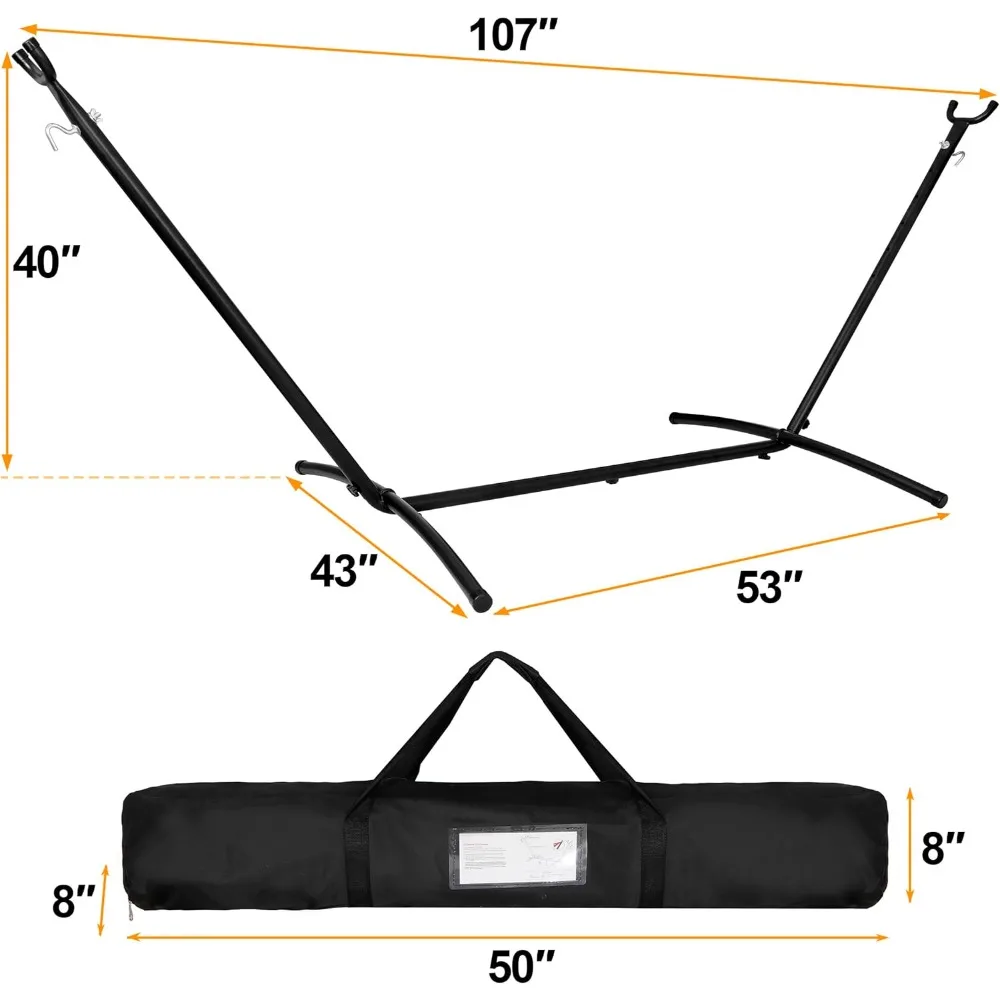
Creative DIY Storage Solutions with Style
Turn hammock storage into a design feature with these creative DIY approaches that combine functionality with aesthetic appeal.
Custom Wall Niches and Built-ins
Create dedicated hammock spaces that complement your décor:
– Recessed wall niches lined with cedar provide protective, aromatic storage
– Built-in cabinets with ventilation slats prevent moisture buildup
– Materials needed: plywood/MDF ($15-25), trim ($5-10), and basic hardware
Repurposed Household Items
Find hammock storage in unexpected places:
– Wine racks cradle rolled hammocks perfectly, with each bottle slot holding one hammock
– Large decorative baskets provide breathable, attractive storage in plain sight
– Vintage suitcases stack to create both storage and nostalgic design elements
Decorative Display Storage
When hammocks themselves are beautiful, make them part of your décor:
– Macramé hanging techniques display hammocks as wall art when not in use
– Fabric hammocks folded in origami-inspired patterns become conversation pieces
– Color-coordinated storage solutions that complement the hammock enhance room design
The key to successful decorative storage is balancing accessibility with aesthetics—your hammock should look intentional rather than simply stashed. Our folding hammock sets are particularly well-suited to these display methods, with their attractive designs and easy-folding features.
Hammock Stand Storage: Tackling the Biggest Challenge
Hammock stands often present the greatest storage challenge due to their size and weight. Here’s how to tackle this substantial storage hurdle:
Collapsible Stand Solutions
Modern collapsible stands offer significant advantages:
– Typical folded dimensions of quality stands measure approximately 4 ft x 6 inches (1.2 m x 15 cm)
– Protective covers prevent scratches and damage during storage
– Dedicated storage bags with carrying handles improve portability between storage locations
Disassembled Stand Organization
For non-collapsible stands:
– Color-coded labels help identify parts for quick reassembly
– Mesh hardware bags prevent lost small parts
– Diagram-based labeling systems simplify reassembly process
Vertical Stand Storage
When stands must remain assembled:
– Wall-mounted rack systems keep stands upright and secure
– Corner stand organizers maximize otherwise unused space
– Ceiling hooks rated for heavy loads (100+ lbs) allow overhead storage
Different considerations apply for indoor versus outdoor storage:
– Indoor stands benefit from felt pads to prevent floor scratches when stored upright
– Outdoor stands require weather-resistant covers if stored outside year-round
– Rust prevention treatments before storage extend the life of metal components
Our lightweight hammock sets include stands specifically engineered to break down into manageable components for easier storage.
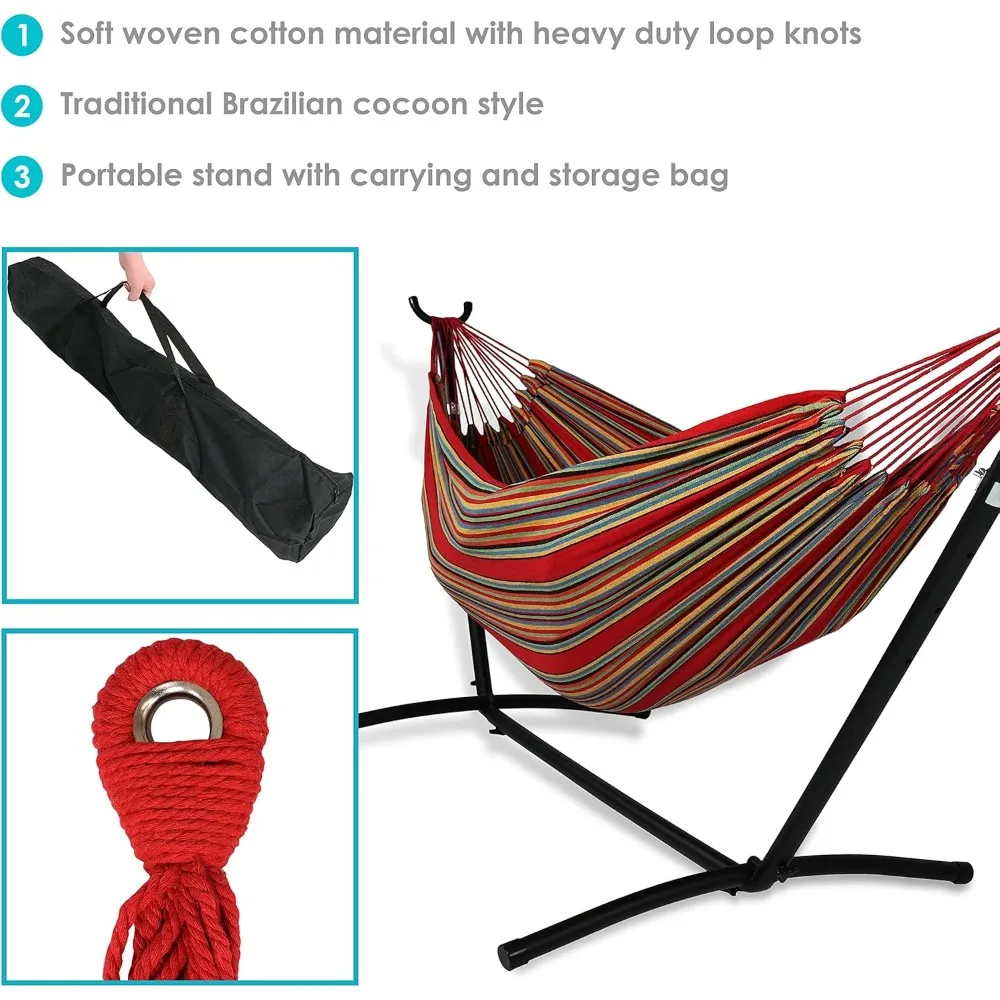
Finding Your Perfect Storage Solution: Decision Factors
Selecting the ideal hammock storage approach depends on several key factors unique to your situation. Consider these elements when making your choice:
Space Assessment Guidelines
Start by measuring available storage areas:
– Vertical space often offers more potential than floor space
– Consider depth requirements (most folded hammocks need 6-12 inches [15-30 cm] of depth)
– Evaluate doorway clearance for access to potential storage locations
Hammock Type Considerations
Different hammocks have distinct storage needs:
– Rope hammocks with spreader bars (24” x 12” x 6” [61 x 30 x 15 cm] when folded) require flat or large-volume storage
– Camping hammocks (6” x 4” x 3” [15 x 10 x 7.5 cm] when compressed) fit in much smaller spaces
– Quilted hammocks with padding require careful folding to prevent permanent creasing
Usage Frequency Impact
How often you use your hammock should influence storage accessibility:
– Daily or weekly use demands quick-access solutions like hooks or nearby furniture storage
– Seasonal use permits more comprehensive packing and remote storage locations
– Travel hammocks benefit from ready-to-go storage that facilitates spontaneous adventures
Budget Considerations
Storage solutions exist for every budget:
– DIY options using existing materials can cost under $20
– Mid-range commercial solutions typically run $40-60
– Premium custom-built storage might cost $100+ but offers perfect integration with your space
Our ultralight camping hammock sets are particularly versatile when it comes to storage options, requiring minimal space while remaining easily accessible.
Maintaining Your Hammock in Storage: Long-Term Care
Proper ongoing maintenance ensures your hammock remains in optimal condition during storage periods.
Ideal Environmental Conditions
The storage environment significantly impacts hammock longevity:
– Maintain temperature between 60-75°F (15-24°C) when possible
– Keep humidity below 60% to prevent mildew growth
– Avoid direct sunlight during storage to prevent UV degradation
– Select locations away from heat sources, damp basements, and uninsulated attics
Pest Prevention Strategies
Protect your hammock from unwanted guests:
– Cedar blocks or lavender sachets naturally deter moths and insects
– Regularly inspect stored hammocks for signs of pests (droppings, chew marks, nests)
– Avoid storing hammocks directly on concrete floors, which can transfer moisture
Seasonal Maintenance Routine
Regular care prevents problems during extended storage:
– Air out hammocks every 3-4 months for 24 hours
– Refold along different lines periodically to prevent permanent creases
– Conduct quick inspections for developing issues like mold spots or fraying
Post-Storage Checklist
Before returning to use after long-term storage:
– Thoroughly inspect all structural components, particularly weight-bearing connections
– Test hanging hardware for security before full weight loading
– Brush off any dust accumulation with a soft-bristled brush
These maintenance practices work perfectly alongside lightweight hammock gear organization techniques to ensure your hammock remains ready for relaxation whenever needed.
Top Hammock Storage Products Worth Considering
While DIY solutions work well, several commercial products offer specialized features that enhance hammock storage efficiency.
Heavy-Duty Storage Hooks and Hardware
Quality mounting hardware makes a significant difference:
– Look for marine-grade stainless steel for outdoor applications
– Choose hooks with weight capacities exceeding 200 lbs (90 kg) for safety margin
– Rubberized coatings prevent hammock fabric damage during storage
– Swivel capabilities allow easier hammock access and reduce rope twisting
Hammock-Specific Storage Bags and Cases
Purpose-built storage solutions offer significant advantages:
– Moisture-wicking fabrics prevent condensation buildup
– Ventilation panels allow air circulation while keeping dust out
– Reinforced stitching at stress points prevents tearing during transport
– Integrated carrying straps improve portability
Multi-Purpose Storage Furniture
Dual-function furniture maximizes space efficiency:
– Weather-resistant deck boxes double as seating and hammock storage
– Storage benches with hinged tops provide convenient access
– Hollow ottomans on casters offer mobile storage solutions
Premium Compression Systems
For minimal storage footprint:
– Silnylon compression sacks resist water while minimizing bulk
– Roll-top closures allow customized compression levels
– Reinforced seams withstand repeated compression cycles
Camping Hammock Sets with Bug Net, Ultralight Camping Hammock Sets
$139.72 Select options This product has multiple variants. The options may be chosen on the product pageFolding Hammock Sets, Quick Setup Hammock Sets
Price range: $305.52 through $583.27 Select options This product has multiple variants. The options may be chosen on the product pageFolding Hammock Sets, Lightweight Hammock Sets
$295.80 Select options This product has multiple variants. The options may be chosen on the product pageDouble / Two Person Hammock Sets, Folding Hammock Sets, Heavy Duty Hammock Sets
Price range: $323.71 through $486.23 Select options This product has multiple variants. The options may be chosen on the product pageComplete Camping Hammock Systems, Folding Hammock Sets, Lightweight Hammock Sets, Quick Setup Hammock Sets
$255.54 Select options This product has multiple variants. The options may be chosen on the product page
Our quick-setup hammock sets include thoughtfully designed storage features that make the transition between use and storage seamless and efficient.
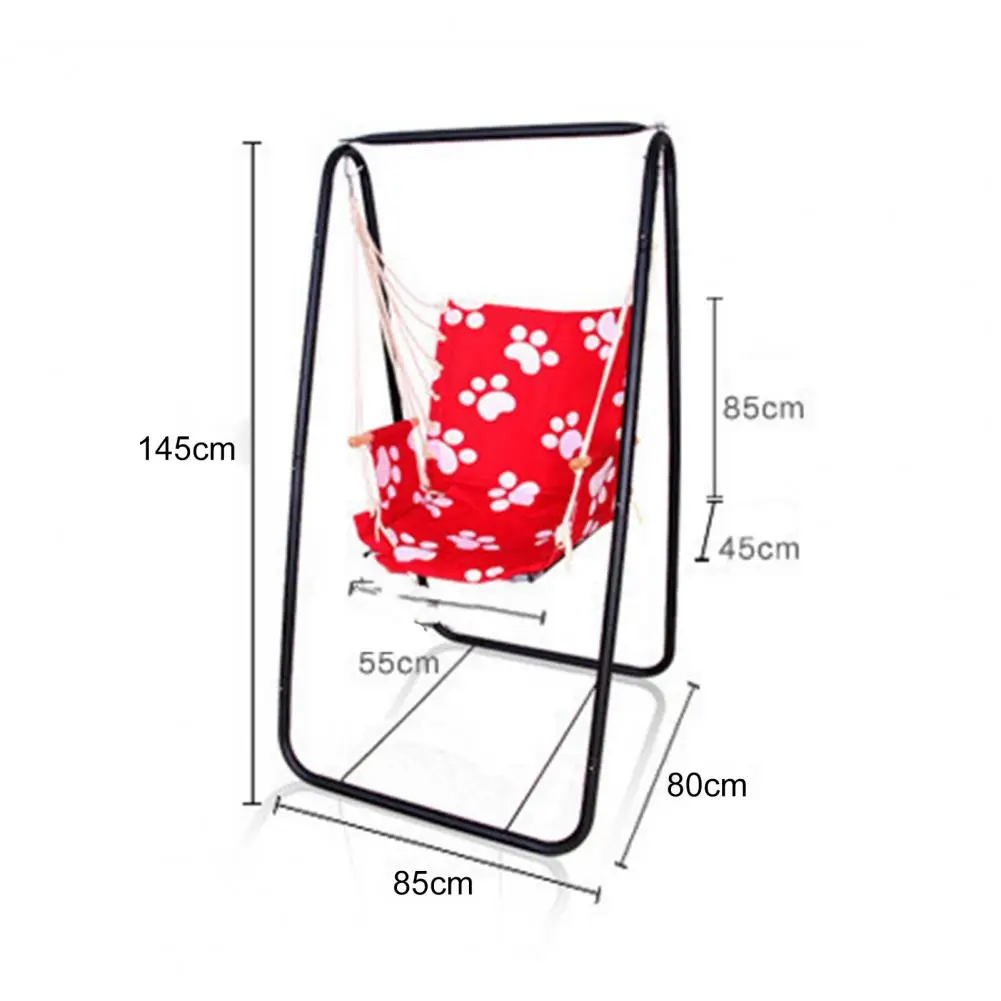
Frequently Asked Questions About Hammock Storage
What’s the best way to store hammocks with spreader bars?
Hammocks with spreader bars store best when hung vertically on wall hooks that support both bars, maintaining their natural shape. If folding is necessary, accordion-fold the hammock body between the bars rather than folding across the bars, which can damage the wood over time.
Can hammocks be stored outdoors year-round?
Only with proper protection. Hammocks stored outdoors require weather-resistant storage boxes or heavy-duty covers with UV protection. Even with protection, most hammock materials last 40-60% longer when stored indoors during harsh weather seasons.
Is it better to fold or roll hammocks for storage?
It depends on the material. Cotton hammocks generally benefit from folding to prevent stretching, while nylon and polyester hammocks compress better with rolling techniques. Consistent application of ultimate guide packability lightweight hammocks principles ensures optimal storage regardless of material type.
What can I use if I’ve lost the original storage bag?
Pillowcases make excellent breathable storage alternatives for most hammocks. For camping hammocks, drawstring stuff sacks designed for sleeping bags offer comparable compression capabilities. Cotton laundry bags also work well for larger hammocks with spreader bars.
How do I prevent mold during winter storage?
Ensure the hammock is completely dry before storage, add silica gel packets to storage containers, and choose locations with stable humidity levels. Additionally, periodic airing out every 6-8 weeks during long-term storage significantly reduces mold risk.
Reclaim Your Space with Effective Hammock Storage
From vertical wall systems to creative DIY solutions, the options for storing your hammock efficiently are as diverse as the hammocks themselves. By selecting storage methods that match both your space constraints and hammock type, you can enjoy the relaxation benefits of hammock ownership without sacrificing valuable living space.
Proper storage does more than just save space—it protects your investment, extending the life of your hammock while keeping it ready for use whenever relaxation calls. Whether you choose decorative display methods that showcase your hammock as part of your décor or concealed solutions that keep it tucked away, the key lies in finding the right balance between accessibility and space efficiency.
At Outside Luxe, we understand that the perfect hammock experience extends beyond just lounging—it includes practical considerations like storage and maintenance. With these solutions in hand, you can now enjoy your hammock’s blissful comfort without the clutter concerns that once came along with it.

